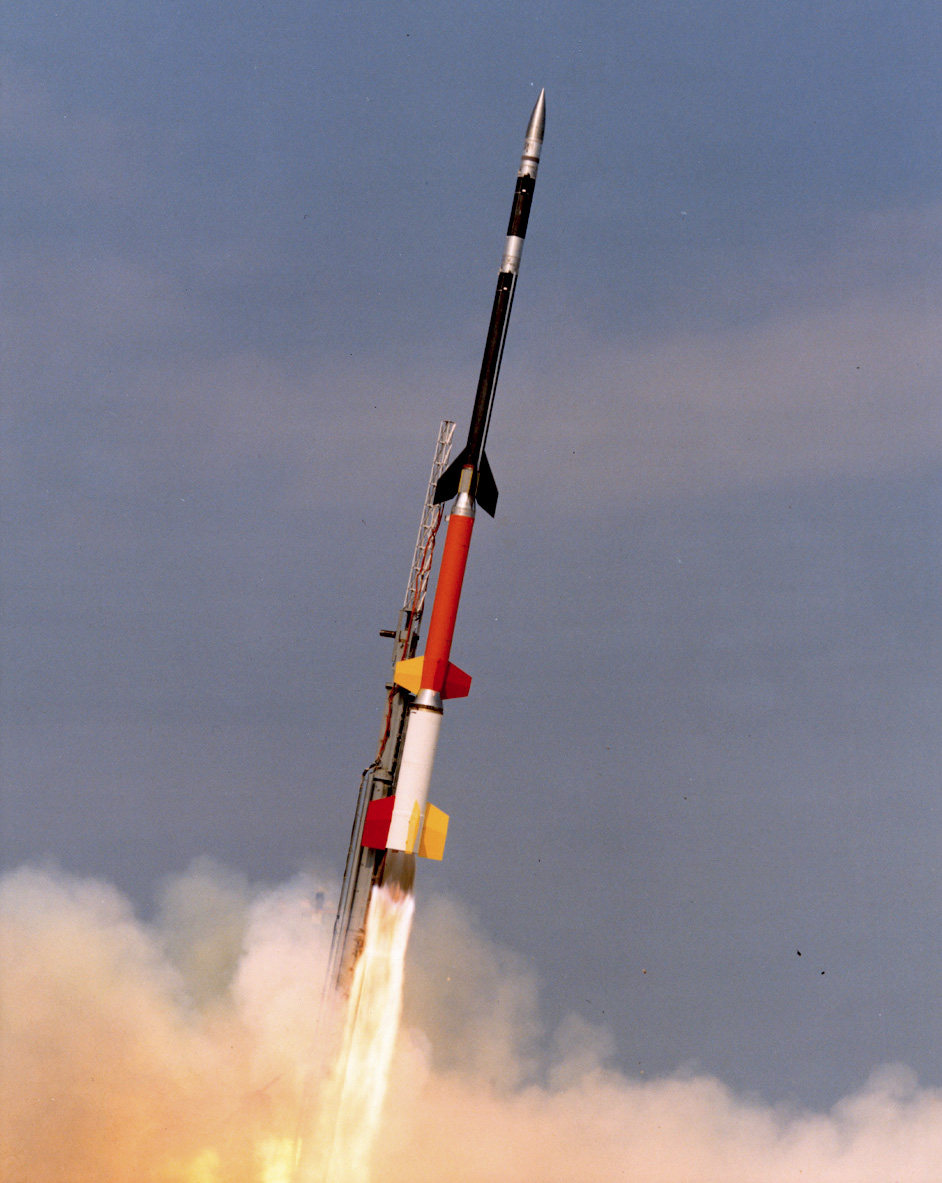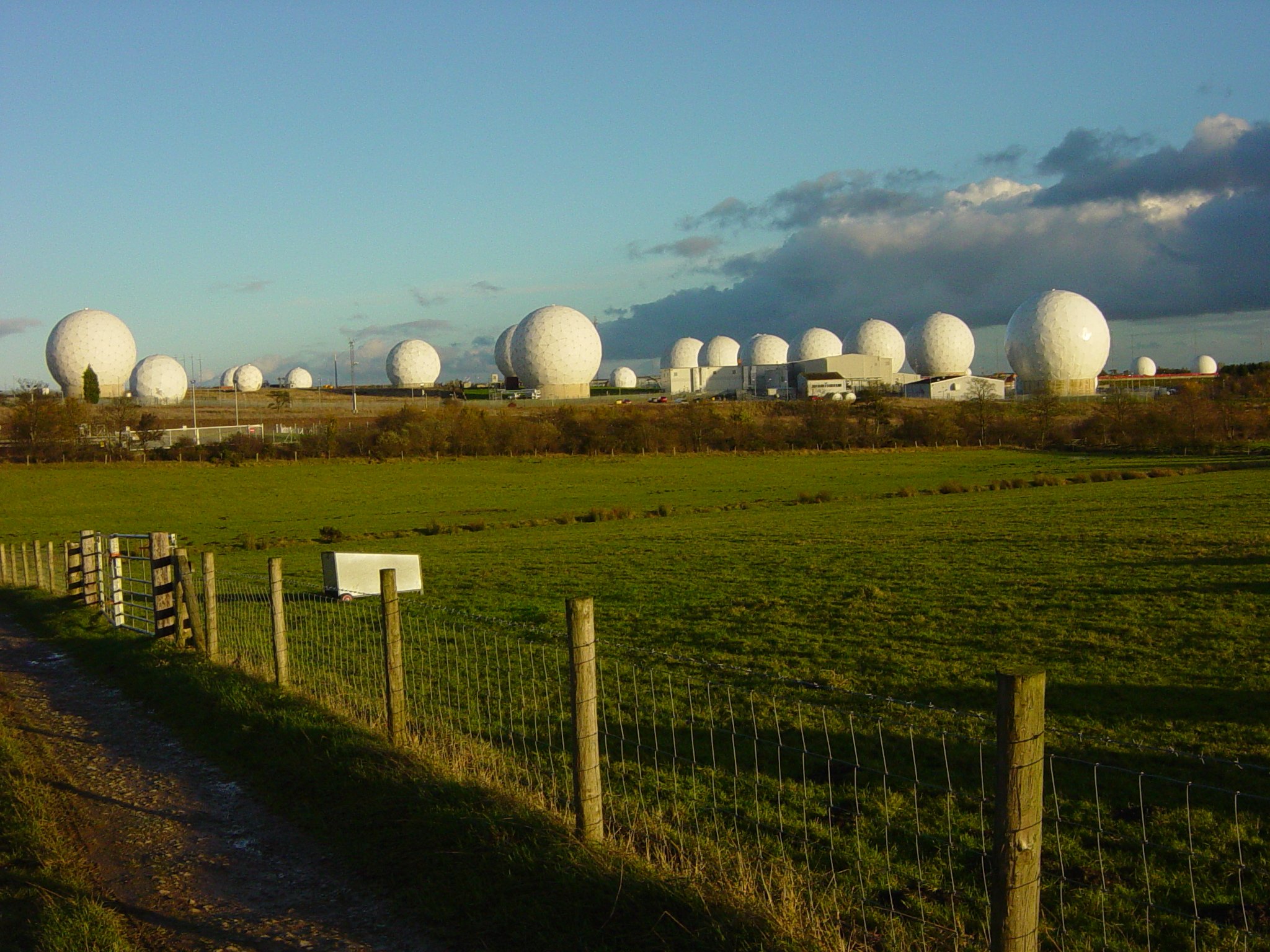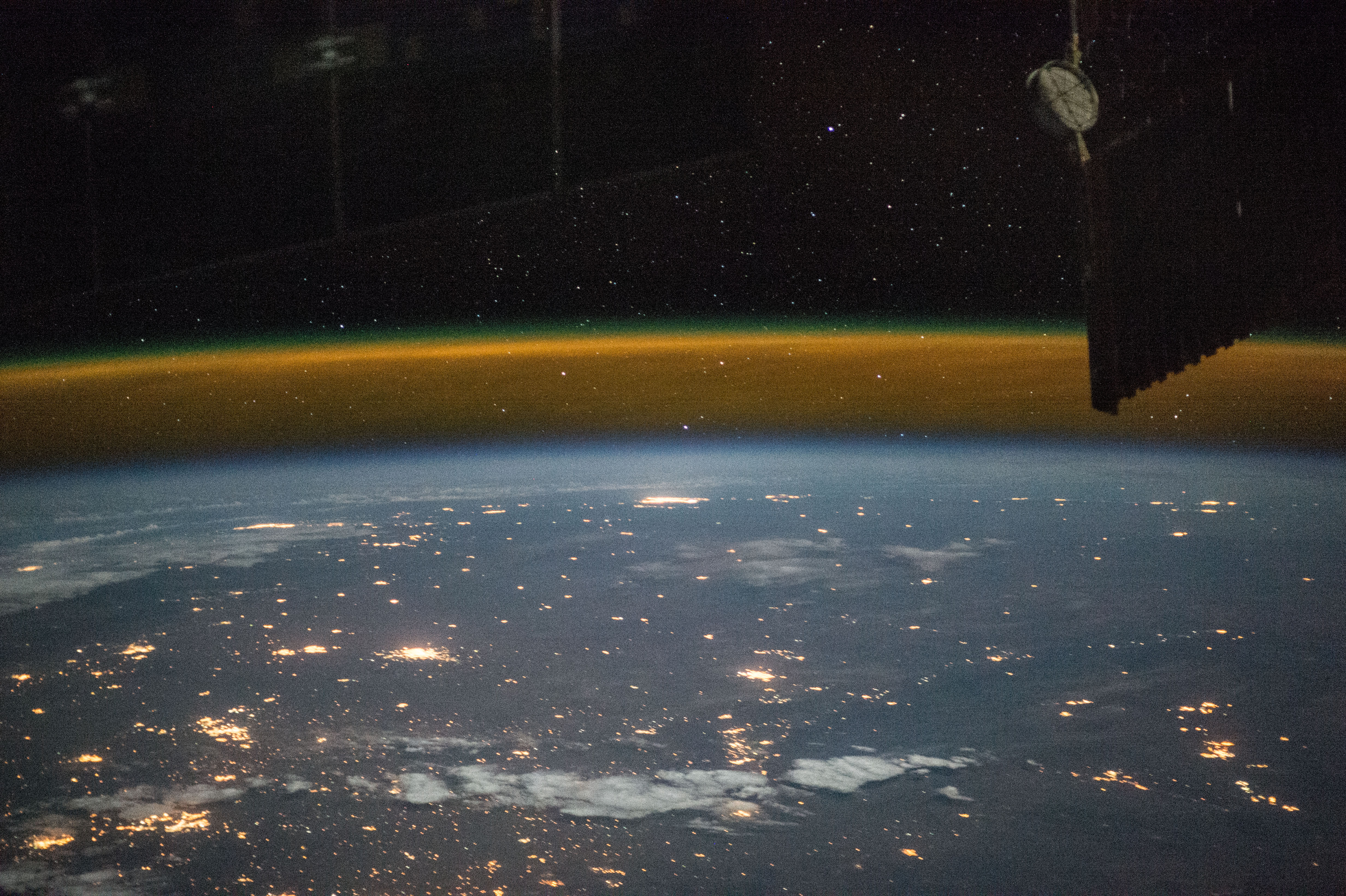|
2009 In Spaceflight
Several significant events in spaceflight occurred in 2009, including Iran conducting its first indigenous orbital launch, the first Switzerland, Swiss satellite being launched and New Zealand launching its first sounding rocket. The H-IIB and Naro-1 rockets conducted maiden flights, whilst the Tsyklon-3, Falcon 1 and Ariane 5, Ariane 5GS were retired from service. The permanent crew of the International Space Station increased from three to six in May, and in the last few months of the year, Japan's first resupply mission to the outpost, HTV-1, was conducted successfully. Overview The internationally accepted definition of a spaceflight is any flight which crosses the Kármán line, 100 kilometres above sea level. The first spaceflight launch of the year was that of a Delta IV Heavy, carrying the USA-202 ELINT satellite, which launched from Cape Canaveral Air Force Station at 02:47 GMT on 18 January. This was also the first orbital launch of the year. On 2 February, Ira ... [...More Info...] [...Related Items...] OR: [Wikipedia] [Google] [Baidu] |
Sounding Rocket
A sounding rocket or rocketsonde, sometimes called a research rocket or a suborbital rocket, is an instrument-carrying rocket designed to take measurements and perform scientific experiments during its sub-orbital flight. The rockets are often used to launch instruments from above the surface of the Earth, the altitude generally between weather balloons and satellites; the maximum altitude for balloons is about and the minimum for satellites is approximately . Due to their suborbital flight profile, sounding rockets are often much simpler than their counterparts built for orbital flight. Certain sounding rockets have an apogee between , such as the Black Brant X and XII, which is the maximum apogee of their class. For certain purposes, sounding rockets may be flown to altitudes as high as to allow observing times of around 40 minutes to provide geophysical observations of the magnetosphere, ionosphere, thermosphere, and mesosphere. Etymology The origin of the term comes fr ... [...More Info...] [...Related Items...] OR: [Wikipedia] [Google] [Baidu] |
Iridium 33
Iridium 33 was a communications satellite launched by Russia for Iridium Communications. It was launched into low Earth orbit from Site 81/23 at the Baikonur Cosmodrome at 01:36 UTC on 14 September 1997, by a Proton-K rocket with a Block DM2 upper stage. The launch was arranged by International Launch Services (ILS). It was operated in Plane 3 of the Iridium satellite constellation, with an ascending node of 230.9°. Mission Iridium 33 was part of a commercial communications network consisting of a constellation of 66 LEO spacecraft. The system uses L-Band to provide global communications services through portable handsets. Commercial service began in 1998. The system employs ground stations with a master control complex in Landsdowne, Virginia, a backup in Italy, and a third engineering center in Chandler, Arizona. Spacecraft The spacecraft was 3-axis stabilized, with a hydrazine propulsion system. It had 2 solar panels with 1-axis articulation. The system employed L-Ba ... [...More Info...] [...Related Items...] OR: [Wikipedia] [Google] [Baidu] |
Kosmos 2251
Kosmos-2251 ( meaning ''Cosmos 2251'') was a Russian Strela-2M military communications satellite. It was launched into Low Earth orbit from Site 132/1 at the Plesetsk Cosmodrome at 04:17 UTC on 16 June 1993, by a Kosmos-3M carrier rocket. The Strela satellites had a lifespan of 5 years, and the Russian government reported that Kosmos-2251 ceased functioning in 1995. Russia was later criticised by '' The Space Review'' for leaving a defunct satellite in a congested orbit, rather than deorbiting it. In response, Russia noted that they were (and are) not required to do so under international law. In any case, the KAUR-1 satellites had no propulsion system, which is usually required for deorbiting. Destruction At 16:56 UTC on 10 February 2009, it collided with Iridium 33 (1997-051C), an Iridium satellite, in the first major collision of two satellites in Earth orbit. The Iridium satellite, which was operational at the time of the collision, was destroyed, as was Kosmos-2251. N ... [...More Info...] [...Related Items...] OR: [Wikipedia] [Google] [Baidu] |
2009 Satellite Collision
On February 10, 2009, two communications satellites—the active commercial Iridium 33 and the derelict Russian military Kosmos 2251—accidentally collided at a speed of and an altitude of above the Taymyr Peninsula in Siberia. It was the first time a hypervelocity collision occurred between two satellites; previous incidents had involved a satellite and a piece of space debris. Spacecraft Kosmos 2251 was a Russian Strela military communications satellite owned by the Russian Space Forces. Kosmos 2251 was launched on a Russian Cosmos-3M carrier rocket on June 16, 1993. This satellite had been deactivated prior to the collision, and remained in orbit as space debris. The other spacecraft, Iridium33, was a U.S.-built commercial satellite that was part of the Iridium constellation for satellite phones. It was launched on September 14, 1997, atop a Russian Proton rocket. Conjunction and collision Events where two satellites approach within several kilometers of each othe ... [...More Info...] [...Related Items...] OR: [Wikipedia] [Google] [Baidu] |
Low Earth Orbit
A low Earth orbit (LEO) is an geocentric orbit, orbit around Earth with a orbital period, period of 128 minutes or less (making at least 11.25 orbits per day) and an orbital eccentricity, eccentricity less than 0.25. Most of the artificial objects in outer space are in LEO, peaking in number at an altitude around , while the farthest in LEO, before medium Earth orbit (MEO), have an altitude of 2,000 km, about one-third of the Earth radius, radius of Earth and near the beginning of the Van Allen radiation belt#Inner belt, inner Van Allen radiation belt. The term ''LEO region'' is used for the area of space below an altitude of (about one-third of Earth's radius). Objects in orbits that pass through this zone, even if they have an apogee further out or are sub-orbital spaceflight, sub-orbital, are carefully tracked since they present a collision risk to the many LEO satellites. No human spaceflights other than the lunar missions of the Apollo program (1968-1972) have gone beyond L ... [...More Info...] [...Related Items...] OR: [Wikipedia] [Google] [Baidu] |
Omid
Omid (, meaning "Hope") was Iran's first domestically made satellite. Omid was a data-processing satellite for research and telecommunications; Iran's state television reported that it was successfully launched on 2 February 2009. After being launched by an Iranian-made carrier rocket, Safir 1, the satellite was placed into a low Earth orbit. President Mahmoud Ahmadinejad supervised the launch, which coincided with the 30th anniversary of the Iranian Revolution; NASA verified the launch's success the following day. Its Satellite Catalog Number or USSPACECOM object number is 33506. Ahmadinejad said the satellite was launched to spread "monotheism, peace and justice" in the world. The ''Tehran Times'' reported that "Iran has said it wants to put its own satellites into orbit to monitor natural disasters in the earthquake-prone nation and improve its telecommunications." Foreign minister Manouchehr Mottaki said that Iran launched the satellite to "meet the needs of the country" an ... [...More Info...] [...Related Items...] OR: [Wikipedia] [Google] [Baidu] |
Safir (rocket)
The Safir (, meaning "ambassador") was the first Iranian expendable launch vehicle able to place a satellite in orbit. The first successful orbital launch using the Safir launch system took place on 2 February 2009 when a Safir carrier rocket placed the Omid satellite into an orbit with a apogee. This made Iran the ninth nation capable of producing and launching a satellite. The Simorgh is a larger orbital launcher based on Safir technology which has since replaced the Safir, and is sometimes called the Safir-2. Design and specifications The Safir measures 1.25 meters in diameter, 22 meters in height and has a launching mass of 26 tons. The rocket consists of two stages; The first stage utilizes an upgraded Nodong/ Shahab-3 type engine which burns a hypergolic combination of UDMH as fuel and nitrogen tetroxide as oxidant, producing 37 tons (363 kN; 82,500 lbf) of thrust. The second stage utilizes a pair of smaller gimballed engines called LRE-4, fed by a ... [...More Info...] [...Related Items...] OR: [Wikipedia] [Google] [Baidu] |
Cape Canaveral Air Force Station
Cape Canaveral Space Force Station (CCSFS) is an installation of the United States Space Force's Space Launch Delta 45, located on Cape Canaveral in Brevard County, Florida. Headquartered at the nearby Patrick Space Force Base, the station is the primary launch site for the Space Force's Eastern RangeCAST 1999, p. 1-12. with four launch pads currently active (Space Launch Complexes 36, 40, 41 and 46). The facility is south-southeast of NASA's Kennedy Space Center on adjacent Merritt Island, with the two linked by bridges and causeways. The Cape Canaveral Space Force Station Skid Strip provides a runway close to the launch complexes for military airlift aircraft delivering heavy and outsized payloads to the Cape. A number of American space exploration pioneers were launched from CCSFS, including the first U.S. Earth satellite (1958), first U.S. astronaut (1961), first U.S. astronaut in orbit (1962), first two-man U.S. spacecraft (1965), first U.S. uncrewed lu ... [...More Info...] [...Related Items...] OR: [Wikipedia] [Google] [Baidu] |
ELINT
Signals intelligence (SIGINT) is the act and field of intelligence-gathering by interception of ''signals'', whether communications between people (communications intelligence—abbreviated to COMINT) or from electronic signals not directly used in communication (electronic intelligence—abbreviated to ELINT). As classified and sensitive information is usually encrypted, signals intelligence may necessarily involve cryptanalysis (to decipher the messages). Traffic analysis—the study of who is signaling to whom and in what quantity—is also used to integrate information, and it may complement cryptanalysis. History Origins Electronic interceptions appeared as early as 1900, during the Boer War of 1899–1902. The British Royal Navy had installed wireless sets produced by Marconi on board their ships in the late 1890s, and the British Army used some limited wireless signalling. The Boers captured some wireless sets and used them to make vital transmissions. Since the ... [...More Info...] [...Related Items...] OR: [Wikipedia] [Google] [Baidu] |
USA-202
USA 202, previously NRO Launch 26 or NROL-26, is a classified spacecraft which is operated by the United States National Reconnaissance Office. It is an Advanced Orion ELINT satellite. According to '' Aviation Week,'' it "fundamentally involves America's biggest, most secret and expensive military spacecraft on board the world's largest rocket." The combined cost of the spacecraft and launch vehicle has been estimated to be over US$2 billion. Amateur astronomer observations suspected the satellite was eavesdropping on Thuraya 2 and this was reported to be confirmed by documents released on Sep 9, 2016 by '' The Intercept'' as part of the Snowden Files. Launch USA-202 was launched from Space Launch Complex 37B at the Cape Canaveral Air Force Station, on the third flight of a Delta IV Heavy rocket. The launch was originally scheduled for 2005, but was delayed due to a number of issues, and lift-off took place at 02:47 GMT on 18 January 2009. References External l ... [...More Info...] [...Related Items...] OR: [Wikipedia] [Google] [Baidu] |
Kármán Line
The Kármán line (or von Kármán line ) is a conventional definition of the Outer space#Boundary, edge of space; it is widely but not universally accepted. The international record-keeping body Fédération Aéronautique Internationale, FAI (Fédération aéronautique internationale) defines the Kármán line at an altitude of above above mean sea level, mean sea level. While named after Theodore von Kármán, who calculated a theoretical limit of altitude for aeroplane flight at above Earth, the later established Kármán line is more general and has no distinct physical significance, in that there is a rather gradual difference between the characteristics of the atmosphere at the line, and experts disagree on defining a distinct boundary where the atmosphere ends and space begins. It lies well above the altitude reachable by conventional airplanes or high-altitude balloons, and is approximately where satellites, even on very eccentric trajectories, will Orbital decay, dec ... [...More Info...] [...Related Items...] OR: [Wikipedia] [Google] [Baidu] |







